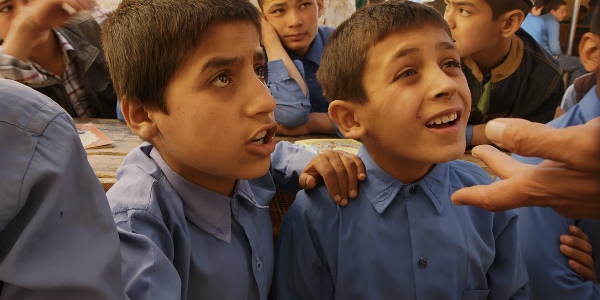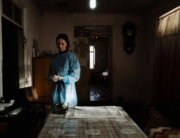Two qualities stand out in the new documentary by James Longley (Iraq in Fragments), which debuted yesterday at the Toronto International Film Festival. One: the rich, striking sun-drenched cinematography. Second, the film, set in the here and now of Kabul, Afghanistan, departs from other works that have tackled the repercussions of the country’s decades-long war, whether from a cultural point of view (Afghan Star) or on the battlefront (Armadillo).
However, the unfolding points of view here are entirely Afghan. Yet in comparison to many films set in Afghanistan, documentary or feature film (The Breadwinner; Neither Heaven nor Earth), what occurs here is less momentous. Nevertheless, it’s a time capsule, a portrait of a specific time and place: the prospects for the everyday people and its youngest generation after 40 years of war.
The film follows the time line of the school year, though it was shot over three years, and mainly features two brothers, both in their early teenage years. The eldest, Rostam, works along his father in an auto repair shop after school and wants to follow in the trade. Meanwhile, younger brother Sohrab reads, absorbed in a textbook, while his father and brother hammer away on auto parts. Sohrab strives to be the number one student at the Daqiqi Balkhi School, where their mother is a teacher. He wants to pursue higher education and not work as a skilled laborer, in his case, a tinsmith. Meanwhile, the brothers’ makeshift classrooms in their sex-segregated school are outside under a tarp in a tent-like structure—a new school is under construction.
Although little seems to be happening on screen, the most telling details happened almost fleetingly: male students are patted down by security officers before they enter school; a woman, wearing a burka, rushes by the camera on the street. One older teacher, Nik Mohammed, serves as a temporary historian for the film, praising the era of King Zahir. In his words, “Truth and love have vanished” from his nation today. In the press notes, the director describes the capital as “a city clinging to stability.”
Often the scenes are filmed during magic hour right before sunset, with plentiful establishing shots of a red sky against the cityscape. The film highlights how far digital photography has come in the last 15 years or so. There is a golden glow in nearly all of the exterior scenes. Yet the film proves that a documentary can be beautiful looking while not downplaying or camouflaging or beautifying the struggling circumstances of its subjects.
The political chaos and war lie mostly in the background, although there are mentions of a suicide bombing and that a historical neighborhood mosque was destroyed by the mujahideen. Though the director has avoided the talking-head format, he instead relies on the use of voice-overs, which, besides sometimes causing confusion about who is talking, means the viewers are told directly what the participants are thinking. The narration provides a well-defined context that’s more revealing than the quotidian day-to-day activities and interactions that unfold on screen.
As a result, the movie may come across as modest and uneventful in comparison to the earlier mentioned films, or to the current crop of nonfiction films at the festival (Ghost Fleet, which investigates modern-day slavery in the Thai fishing industry, for example). Still, it provides a needed perspective that provides a broader view outside of the war zone.







Leave A Comment